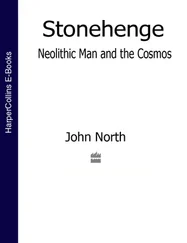Where do we live, if we see one dimension less?..
And the second question:
Where do we look at our external three-dimensional world?
So, we see one dimension less than the space in which we live. At first, I thought that I had made a discovery: that we are residents of the three-dimensional world looking from some fourth dimension to our three-dimensional world. But then, having analyzed what we actually see, I came to the conclusion that we do not see the volume, we always see the plane that is, two dimensions. The cube always appears flat to us, and only the stereo effect of the two eyes forms a volume. Well, now let’s think again: maybe our world is two-dimensional? We always walk, go, float on a plane, on the surface of something. What is height? This is gravity. Earth gravity gives us an indication that the flat wall in front of us is the third dimension, that is, height, and if there were no gravity, we would also perceive the wall as a plane and also walk along it. Even man externally represents the plane – this is a skin cover. It turns out that we still do not live in a three-dimensional (time we will not take into account now), but in a two-dimensional world we can see not a three-dimensional, but a two-dimensional world. If we had seen three dimensions, we would have seen the reverse side of the cube, but then we would be the inhabitants of not three-dimensional, but four-dimensional space, but I have not yet found convincing evidence that the additional dimensions are the same lines as the length, width and height. Take, for example, a dimension like time. For him, it turns out, there is also a line on the chart. This is a diagonal, too, coming from zero.
In this regard, I have complaints about how to measure our physical world. As I already said, in fact, the height is that same plane, set vertically. And what is hidden there, under the surface of this very plane? Let us take, not height, but thickness. Thickness is a material whose outer boundary is a plane. We usually do not see this material, the plane hides it from us, serves as a border. If we even break the plane, what will we see in the place of the break? Again the plane. It will be uneven, but this does not change things. Under this plane is hidden not the thickness, but the essence of the object. This may be iron, stone, plastic. Each item will consist of other atoms. We can see them in the electron microscope. So what? We will again see the flat surface of the ball, or rather balls. But we will not see the essence.
So, the third or next dimension should be called the essence of the physical body, which is hidden under the plane, but the problem is that it is not known in what measures to measure the essence? And what actually called the essence of the subject? What, for example, is the essence of the iron bar? Maybe these are the functions of that thing, that material object, which are measured from the outside in centimeters and meters. What makes a thing function can only be measured indirectly, fixing the manifestations of the function in our material, flat world.
And one more thing. Someone from the outside has to figure out the essence of the thing, the subject. There must be another thing or more simply, a certain observer who would evaluate not only the external side of the subject, but also its essence. The subject itself will not figure out its essence.
It turns out that the observer is an essential addition to any object, thing, and if it is deeper, then a phenomenon, an integral external factor that helps to determine the essence of the reality surrounding him. It turns out that the observer is another dimension, additional to the essence of the subject. It turns out that the world exists for the observer, that the observer is an integral part of the existing world. The observer does not see the essence of the subject. He defines it indirectly through the functions of the object. Although the functions of things, objects, phenomena are different, but all of them can be united by one definition – the idea of a thing or phenomenon.
The paradox here is that this third dimension itself cannot be measured. It has no measurements. It is everywhere, and at the same time, it was originally laid somewhere. Material characteristics determine the difference between the manifestations of an idea in our world, but its essence is one, it revives our world, sets it in motion. Spiritually, we are parts of this idea, so we cannot see the idea, but only its manifestations. We look from there. We cannot see what we are part of. We are children of two worlds. Our shell belongs to the material flat world, our soul belongs to the third dimension inaccessible to our review.
When I began to project our three dimensions into cosmos, it turned out that cosmos is generally one-dimensional. But more about that later.
In general, it turns out that three-dimensional space does not really exist. There is a two-dimensional plane, a one-dimensional line and a dimensionless point, and we live in a two-dimensional world with a one-dimensional cosmos.
But that’s not all. Our three dimensions are only flowers. In fact, the world is completely different. But more about that later.
Before we end up with spatial dimensions, let’s make the one-dimensional and two-dimensional worlds infinite. In the one-dimensional world, we will connect the ends of the line for this – we will make a circle, and in the two-dimensional world – we will twist the plane to make a ball. The first thought experiment with the length, width and height of our three-dimensional world, we ended.
In the previous chapter, we designated the lines as the basis for the structure of our Universe. Lines can be motion vectors. And what drives everything in the Universe? This is energy. The basis of all processes in the Universe and even the basis of life is energy. We can say that energy is what lies behind the three dimensions: the length, width and height – this is the essence of the Universe.
When we talked about movement, it begins not just like that, but with an impulse of energy. The source transmits a pulse of energy, the pulse moves, and the receiver or observer receives it. So is the movement.
Energy is transmitted in portions. That is, impulse follows. It starts from zero, rises to its maximum value, and then drops to zero again. The impulse of energy has a very interesting relationship with space. Passing through some point of space, the impulse increases to the maximum value at this point and then falls. But what is interesting. The impulse of energy moves in space like a wave on the water, and during its movement it does not change. He, of course, loses energy, but he does not change. Its shape with the minimum and maximum values remains unchanged.
Energy has one inherent property, it necessarily bends the space around it. I started the book with a funny nursery rhyme: “there was a crooked man, and he walked a crooked mile”. This is because there are very few straight lines in cosmos, and besides, they are mostly conditional. And the blame for all the energy. This is it that bends space. She would like to roll space into a ball, as she did with a proton, but in other cases she does not have enough strength to fold space. Energy tries to roll space again and again, and we see a wave spreading in all directions.
Under the influence of energy, our physical world is completely different from three dimensions: length, width, and height. It is rather spherical or wavy, because all the straight lines in it are curved with energy. Look around: the Earth is round, the horizon is round, the Earth rotates around the Sun in a circle – everything is connected with circles. Where is the length, width and height – three dimensions? Indeed, they exist only in our apartment or house.
Читать дальше










